| THE CAVES IN LAGO COLONY |
|
ALSO KNOW AS: BURSON'S CAVES, THE NEW HOUSE
CAVES, OR JUST: THE CAVES.
|
|
PHOTOS AND STORIES ABOUT THE CAVES NEEDED.
THE FOLLOWING PHOTOGRAPH MAY OR MAY NOT HAVE BEEN TAKEN IN THE LAGO COLONY
CAVES. IT CAME FROM THE LAGO PUBLICATION, "CARIBBEAN CAREERS".
|
|
CLICK HERE TO GO BACK TO LAST PAGE |
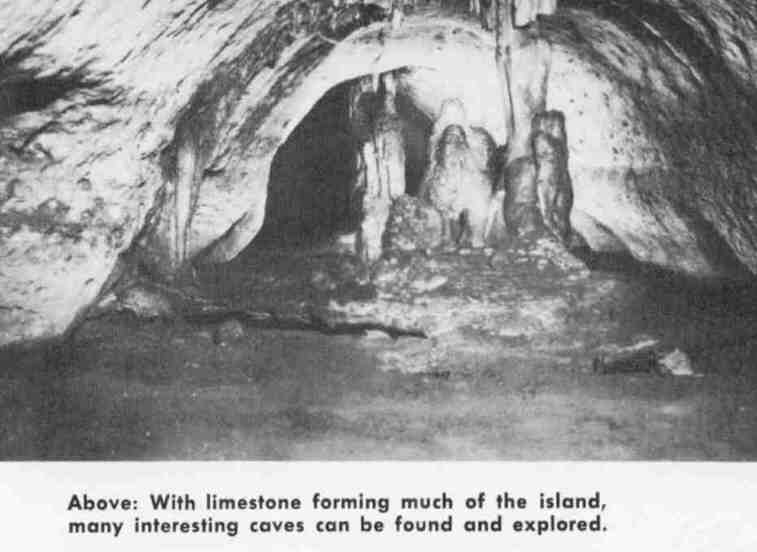 |
|
THE FOLLOWING PHOTOS OF THE CAVES WERE SUPPLIED BY BILL MOYER, TAKEN IN
AROUND 1929 |
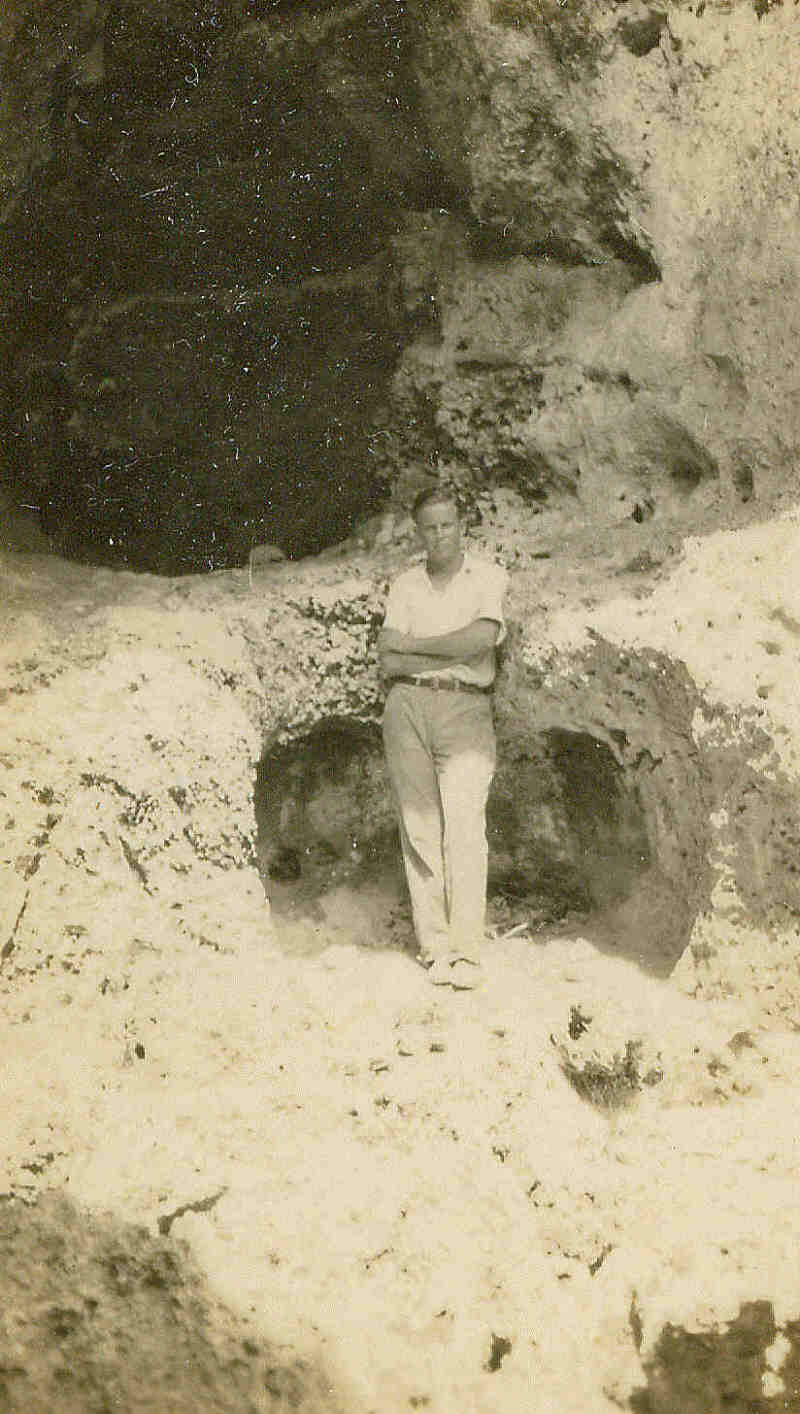 |
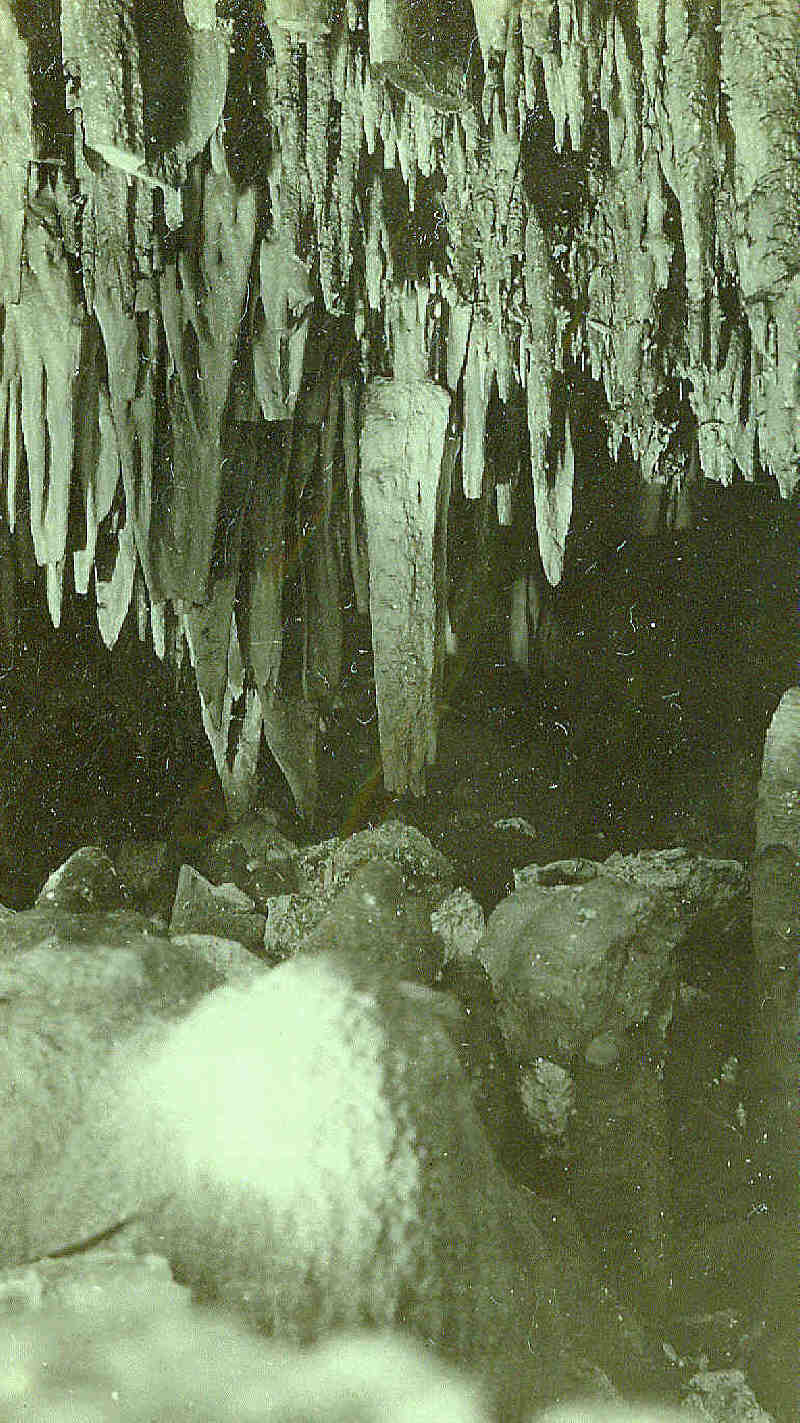 |
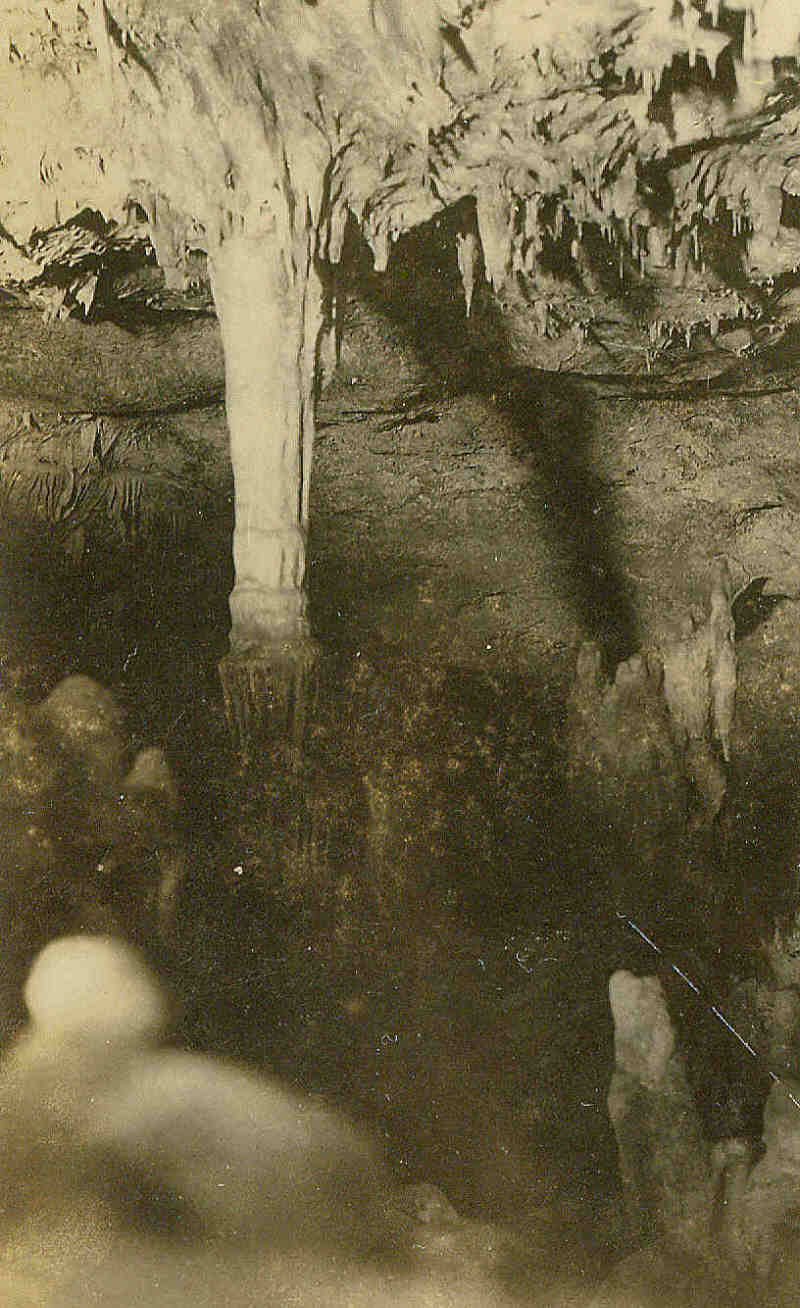 |
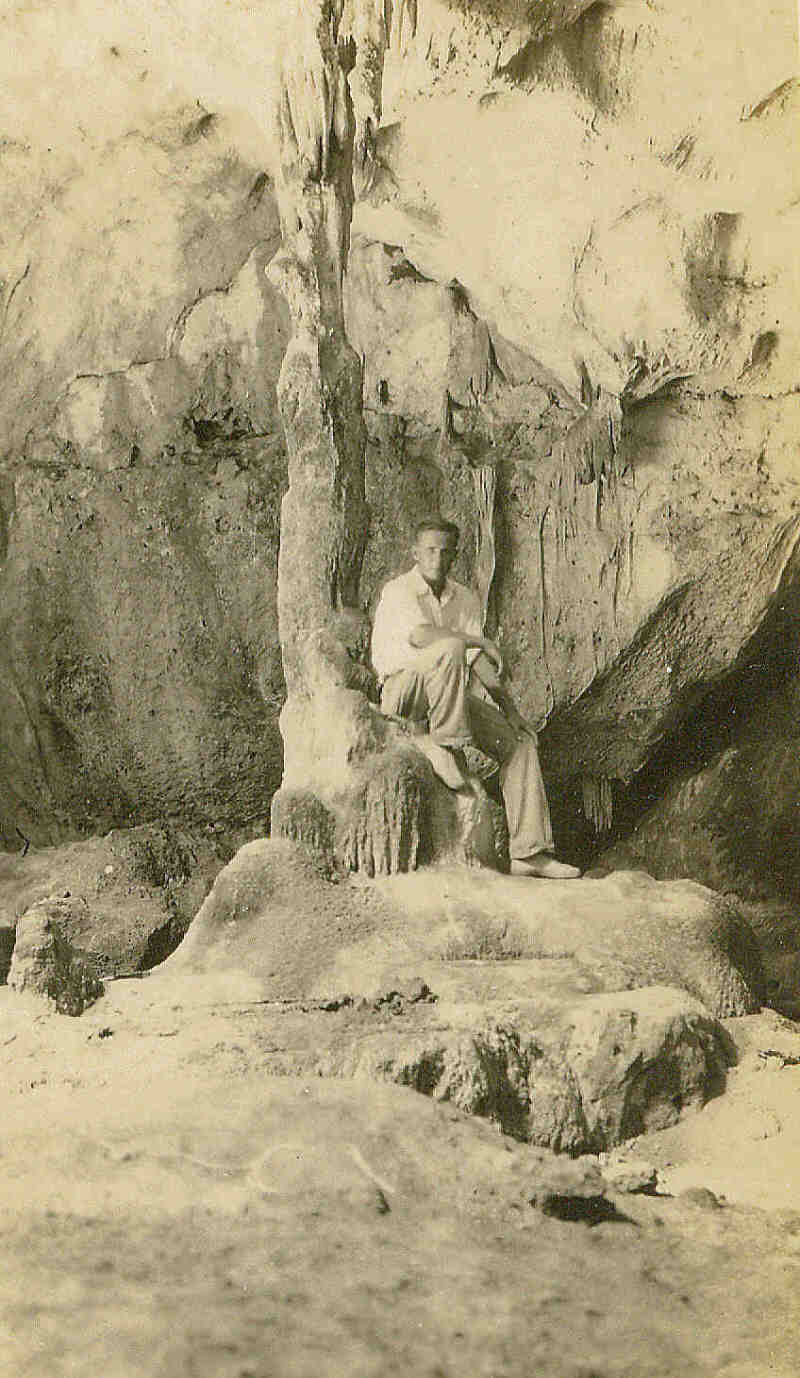 |
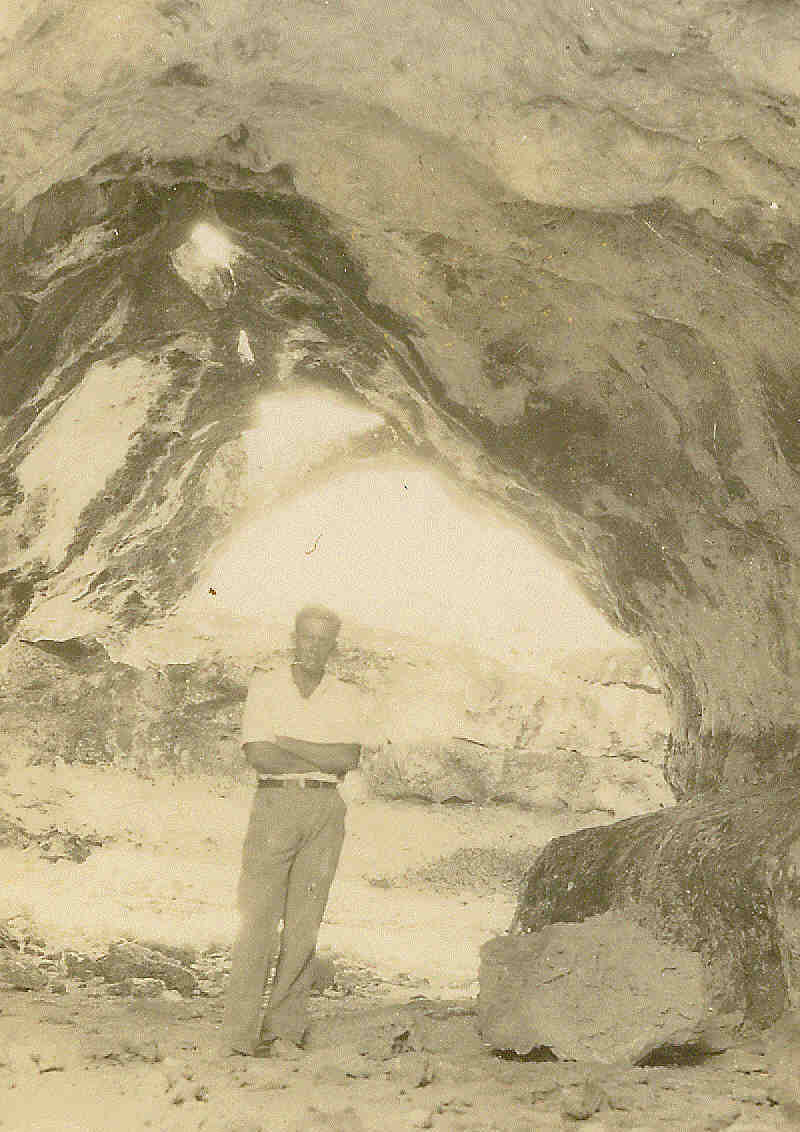 |
 |
|
THE NEXT THREE COLOR PHOTOS FROM INSIDE THE
COLONY CAVES COME FROM MITSY RAE. THEY WERE TAKEN IN THE MID 1950's. |
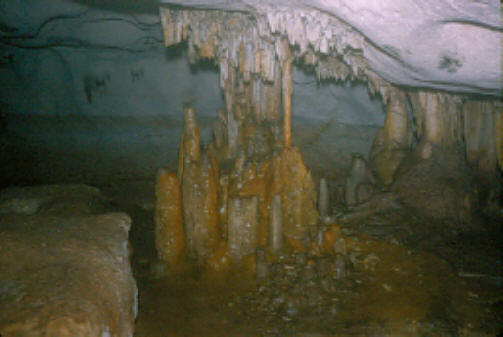 |
 |
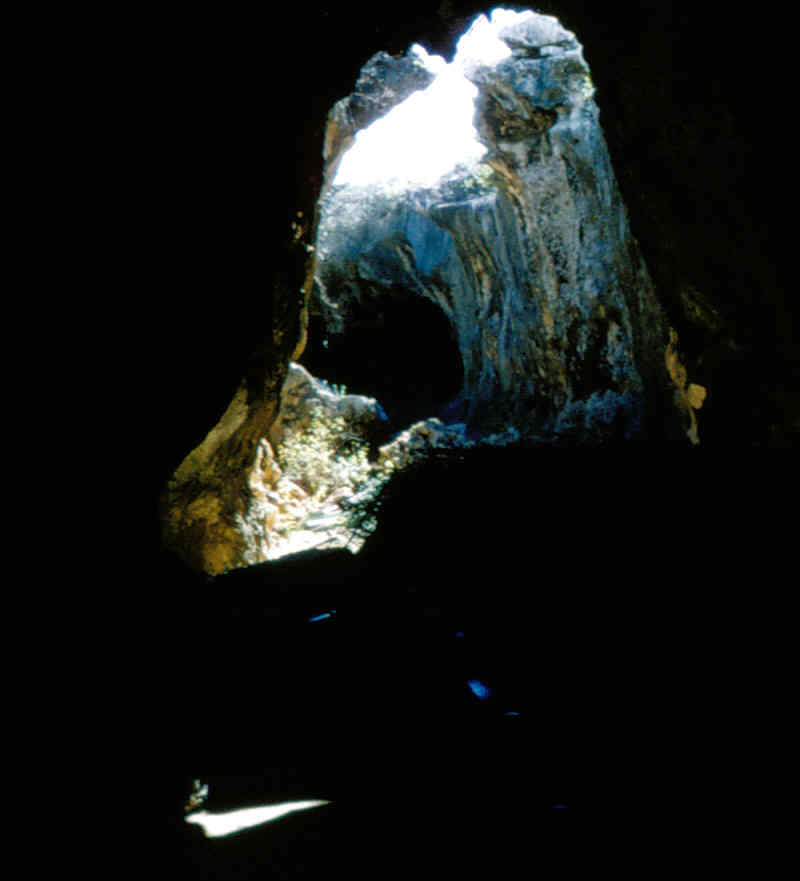 |
|
THE FOLLOWING IS FROM "CAVES
IN ARUBA" BY: BILL MOYER |
| There was a hole
in the coral about 20 feet wide and perhaps 40 feet long. It was about
twenty feet deep--too deep to jump in. You had to use a ladder or, more
conveniently, climb down a large tree (I don’t recall what kind--perhaps
a divi-divi or even a seagrape tree, although I think the branches were
bigger and sturdier than other seagrape trees I remember climbing in.)
Once at the bottom of the tree, you were in a large, open area from
which caves led in two or perhaps three directions--north, southwest,
and I think also to the west. The area to the southwest opened up soon
after you entered it, into a medium sized room with a constant dripping
of moisture from the ceiling. There were stalactites (ones coming down
from the ceiling have to hang “tite”, and ones coming up from the floor
“mite” reach the ceiling) It was fun to visualize this as a shower room,
although there really never was enough water flow for bathing. |
| The cavern to
the north was quite long. Its ceiling was mostly high enough to permit
you to walk comfortably upright, It curved to the northwest and opened
into a fairly large room, beyond which was a beautiful stalagmite and
stalactite formation almost in the shape of an altar. Behind that, the
cave extended for many yards further west, gradually narrowing. The big
room was a bit scary, because phosphate miners had drilled wells into
the floor to get water to operate their mining hoses. This was scary to
me because I figured I could probably find my way out of the cave in the
dark iffy flashlight ever went out, but there were enough stalactites
hanging down that it would be hard to miss them all and, more
critically, it might be hard to avoid falling into one of the wells
(there were two, I think.) When I was in the cave by myself, I realized
no one would be likely to find me for a while, especially if l were down
in one of the wells. |
| The tunnel that
went west behind the “altar” formation showed obvious signs of having
been mined. Somehow, the phosphate miners must have followed a vein of
high-phosphate-content rock through the natural cave, carving material
out of the sides. The tunnel was thus enlarged by mining though you
could see that its curving shape and fissured ceiling were natural. My
recollection is that we kids crawled as far back into the tunnel as we
could, and ran into cracks too small to enter, then turned back again. |
| Mr. and Mrs.
Kaplan lived on the north edge of the expanse of coral in which the cave
(we called it “The Colony Cave” at the time, or just “The Cave”) was
located. Harvey Kaplan, a boy perhaps two years older than I was, was a
very active and fearless kid. Like all onus, he wandered over the coral,
throwing rocks at lizards living in fissures in the coral (which tended
to fill in with light soil and grow little bushes that could nourish
insects or lizards.) He found a crack in the coral just south of his
home, bigger than average, and slithered into it on his stomach. Much to
his delight, the crack opened up a little as he crawled east, and
eventually led into the Colony Cave itself. The next day at school, he
rushed to tell other kids about his discovery, which we very soon began
to call “Kaplan’s Cave” ! The next Saturday, along with the Burbage boys
and perhaps Ronald Turner and others, I followed Harvey (also known as “Tootie”)
Kaplan into his private tunnel. It gave me the creeps to have to slither
on my stomach through a narrow passage while at the same time curving to
the right, but “Tootie” was leading the way and showed no fear at all.
As the tunnel became larger, the adventure became more exciting, and my
recollection is that we emerged into the chamber just to the southwest
of the main entrance to Colony Cave, where water dripped from many spots
in the ceiling and lay in shallow puddles on the floor. Stepping out of
the narrow tunnel into the large, familiar room was like walking into a
mansion. |
In high school,
several onus kids once took advantage of Hydroponics Garden manager, Tom
Eastman’s, trust by snitching gasoline from his small storage tank
beside an emergency generator outside the Garden, to fill bottles with
gasoline and make Molotov cocktails to throw against the walls of the
Colony Cave. It was a stupid and reckless thing to do, littering the
cave with broken glass, and I’m ashamed to have been so thoughtless. I
paid a price by having flaming gasoline flow beneath my feet after one
particularly bad throw, causing me to run impulsively from the area and
bang my head on a vengeful stalactite.
|
| My last memory
of the Colony Cave is Ronald Turner’s Pirate Expedition. One day at
school, Ronald whispered he was going to bury a Pirate Treasure in the
cave, but in a secret place, so that none of us should come there while
his nefarious work was in progress. The next Saturday, I watched as
Ronald marched at the head of a small band including, if I remember
correctly, the Featherstone twins, all suitably attired as pirates.
Ronald wore a special hat or turban on his head, and pulled a wagon
carrying digging tools and whatever he had decided made an appropriate
Treasure. He and his hearties climbed down the tree at the entrance and
entered the main tunnel to the north, and that was the last I saw of
them until they came out again, unencumbered by Treasure. I looked in
the cave later, but they may have turned over soil in many places to
throw searchers off the track, and I couldn’t guess the Treasure’s
location. I didn’t want to dig it up, anyway, because Ronald was a
friend and sounded serious about wanting to leave his special mark on
the cave. |
|
I found an article in the August 27, 1955 issue of the
Aruba Esso News with is
about a researcher who was doing a study of the caves. These are
those pages from that Aruba Esso News. |
|
Is with the Esso News in later years the center fold was printed as one
large page so when it is scanned you loose a bit of the information on
the fold. In these scans more than a little information was lost.
I did not even attempt to put the two sections together because of the
amount of missing information. |
|
 |
|
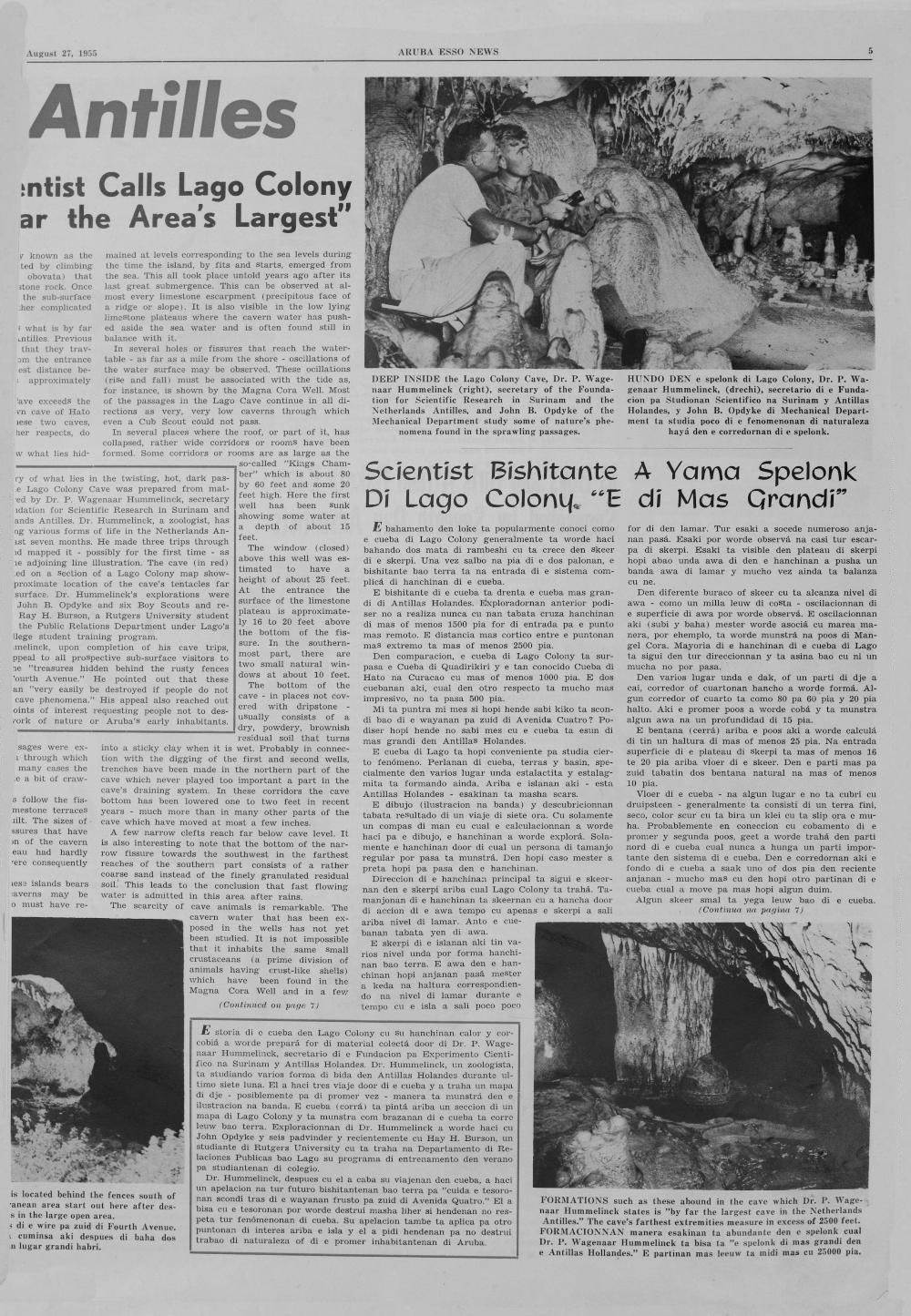 |
|
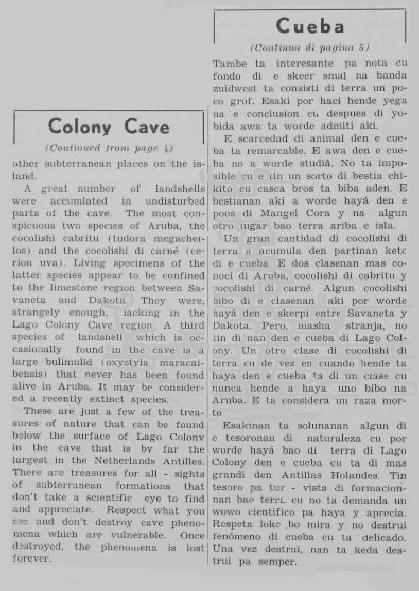 |
|
In the next photo I cropped out the map from the first page. If
you look closely you can see the underground caves drawn on the map,
I had no idea they were so extensive. |
|
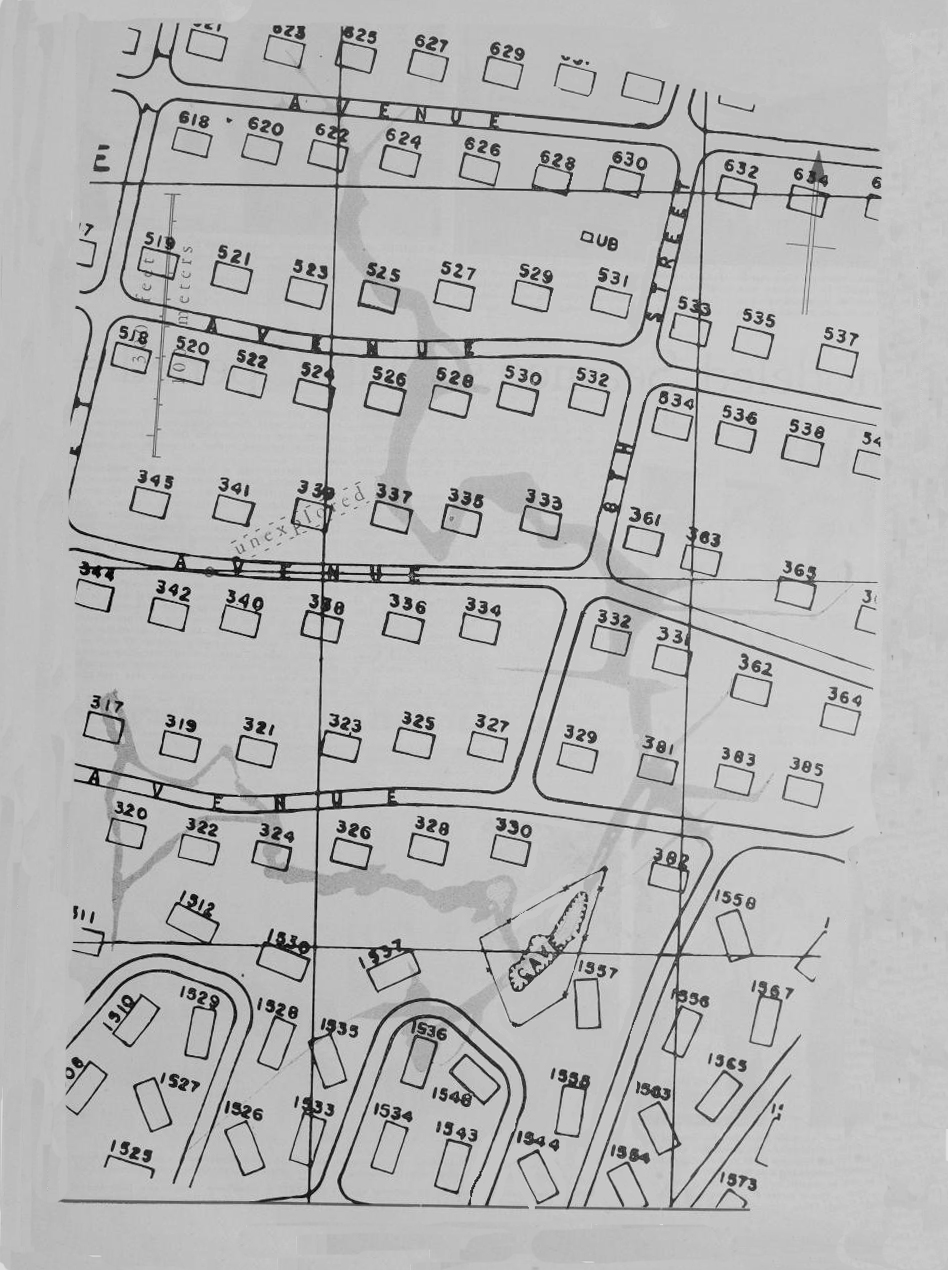 |
|
In the photo above you can see the caves radiating out to the northeast,
southwest and the northwest from the fenced area and designated as CAVE.
Notice under Bungalows 337 and 339 there is an area that is noted as
being unexplored. |
|
RETURN
TO THE SUPPORT FACILITY DIRECTORY |













